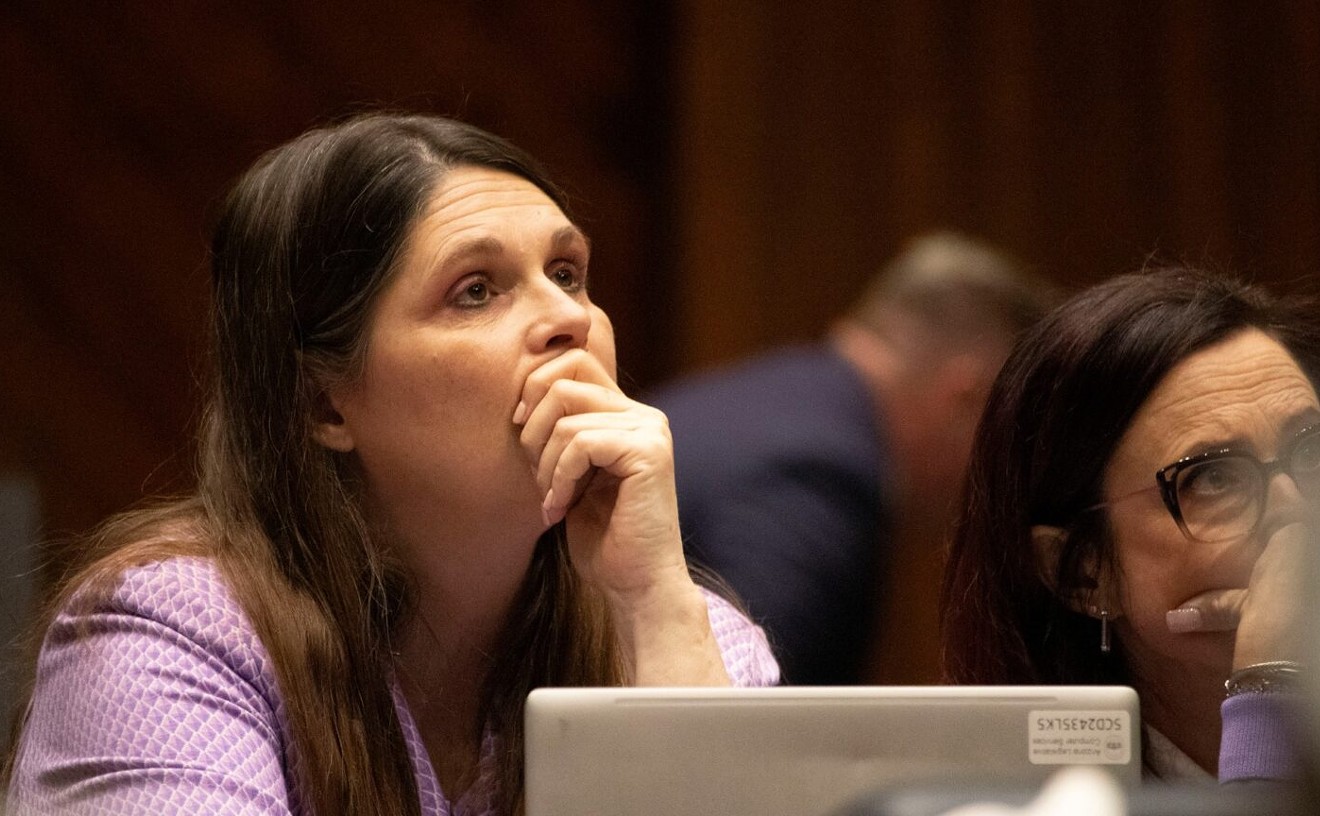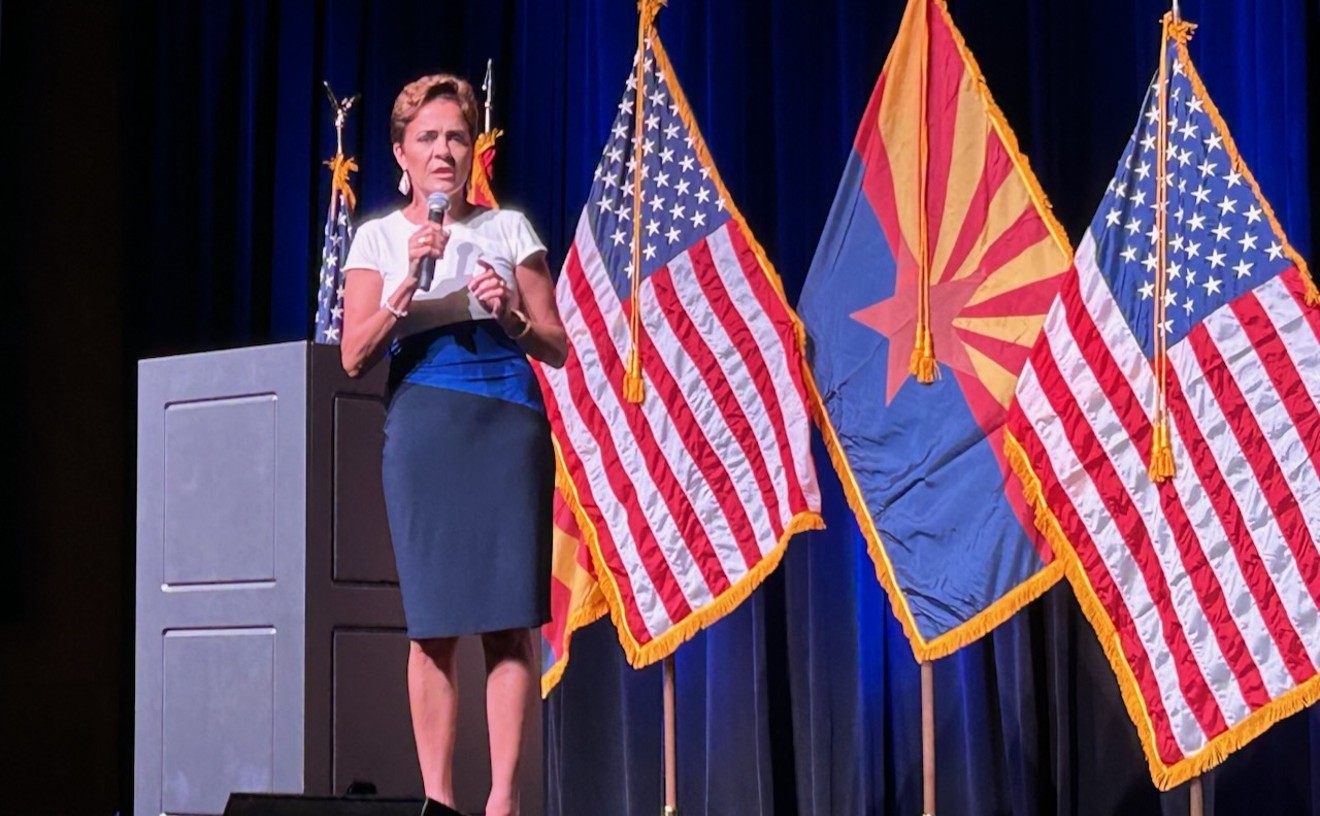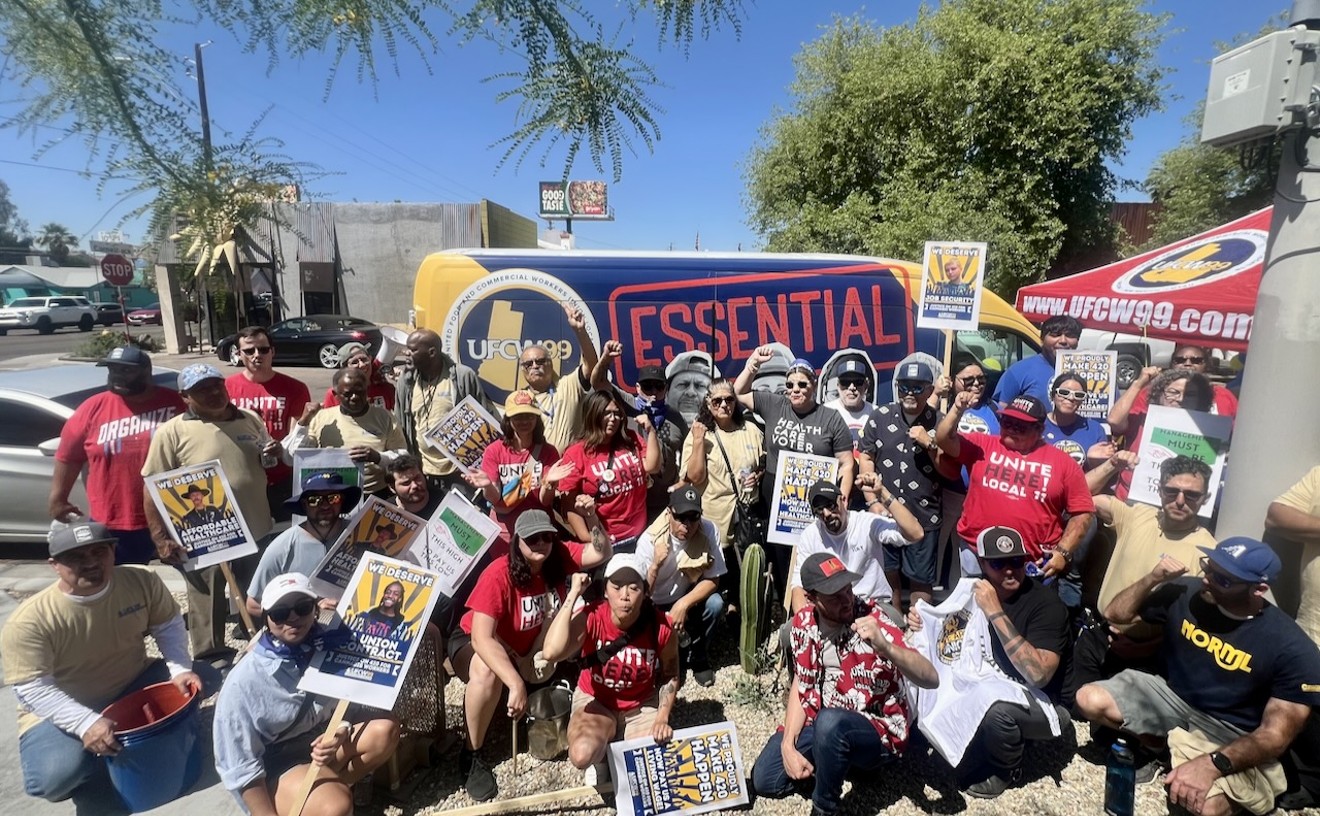Burke, executive director of citizen advocacy group Common Cause, had joined about 20 other diehard opponents of Maricopa County's downtown jail plan the night before at a candlelight vigil in front of the historic Borden building. A demolition permit had been issued for the site, and warehouse-district advocates knew that the wrecking ball was about to swing.
By 5:20 the following morning, when police officers and demolition workers arrived at the scene, most of the Borden building's defenders had retired for the night, but Burke remained, determined that at least one person witness the razing.
Burke stood in the path of the demolition crew. He was arrested by two plainclothes police officers and charged with disorderly conduct. He was held on $500 bond until his release at 1 p.m.
At the Planning Commission meeting, Burke and his allies -- such as Icehouse owner Helen Hestenes and Phoenix Historic Neighborhood Coalition leader Lisa Irwin -- still seemed emotionally raw from the traumatic events of the morning. But Burke tried to put the best possible spin on the situation.
"Putting aside our anger over what happened today, we need to look to the future," Burke told the planning commissioners. "There are simply competing visions for this area."
Burke described the county's vision as an attempt to turn the entire area into a government mall, while warehouse-district advocates prefer to develop the area as a cultural mecca, as prescribed in 1991 by the City of Phoenix in its 25-year vision for downtown.
The problem, as downtown-jail opponents see it, is that this competition has been a fixed fight from the beginning. They argue that the county's plan for the district -- which in addition to the jail includes a morgue and a seven-story parking garage -- has been railroaded past locals with little chance for public discourse.
That's why warehouse-district advocates pushed for the special meeting of the Planning Commission. The issue before the commission was not whether they should grant a historic overlay for the area, but whether they should simply initiate the process of considering the area for a historic overlay. The commission unanimously voted to initiate that process.
In light of the Borden demolition, and the destruction of the Safeway Bakery building a week earlier, such an action may seem like little more than a belated Band-Aid for the crumbling warehouse district. But district supporters see it as a means of getting the public debate they've been seeking.
Phil Gordon, the cultural district's most outspoken supporter on the City Council, told the Planning Commission that this step "will kick in a process which will require interested parties to go before the Historic Preservation Commission and seek demolition permits. This will provide the time for the kind of public debate that's been missing."
A historic overlay for the district would only apply to private-property owners. County-owned properties would not be subject to Historic Preservation Commission approval.
The irony of the Planning Commission's action is that it came too late to save two properties -- the Safeway and Borden buildings -- that are currently privately owned, and it may not be enough to save the next big battleground, the county-owned Santa Fe freight depot.
County officials have flip-flopped several times on the issue of the freight depot. They initially talked of demolishing it in favor of a morgue and a parking garage. County Supervisor Mary Rose Wilcox later announced that the morgue would not be located in the warehouse district, and suggested that the freight depot could be preserved as a first floor for the parking garage. More recently, the county took out a demolition permit -- which the city has yet to approve -- on the depot.
These conflicting messages from county officials have fueled much of the antipathy between the two warring factions. At last week's candelight vigil, Julian Sodari, leader of the Grant Park Neighborhood Association, blasted Wilcox for her recent statement that Grant Park residents had no opposition to the downtown-jail plan. (Grant Park is located directly south of the warehouse district.) In a week, Sodari had obtained more than 100 petition signatures from residents in opposition to the county's proposed site.
Also, the county tried to distance itself from the Safeway demolition on August 13, attributing the action to the building's owner, the Wisotsky Trust (which also owned the Borden building).
At a meeting last week, however, county supervisors approved $2.5 million for the Wisotsky Trust -- $2 million for the purchase of the trust-owned Borden block, slated to house the jail, and $500,000 to reimburse the trust for demolition costs and to provide for on-site parking on the Safeway site. The Safeway site will be used for parking to replace parking areas lost on the Borden block.
The county's decision to foot these bills has all the earmarks of what's often referred to as "anticipatory demolition," whereby government agencies skirt possible legal hurdles by getting private owners to execute demolition projects for them.
Some warehouse-district advocates also question the motives of Jerry Colangelo and the quasi-governmental agency, the Downtown Phoenix Partnership. The partnership has staunchly promoted new development downtown, especially Colangelo's.
At a recent meeting of the Jackson Street Advisory Committee -- a group appointed by mayor Skip Rimsza to study the jail site issue -- Downtown Phoenix Partnership executive director Brian Kearney voted against a motion by Phil Gordon to relocate the jail site several miles to the southwest, on Durango Street, where the county currently has significant jail facilities.
Kearney says the partnership has never taken a formal vote on the jail issue, but informally chose to support the county's proposed site. He's careful, however, to strike a conciliatory tone.
"With regard to the additional developments that they are proposing, we are very interested in working with the county and the city to make sure that what they build is consistent with the warehouse district."
Hestenes feels betrayed by the Downtown Phoenix Partnership, saying that when Bank One Ballpark was approved, residents were assured that the warehouse district would maintain a balance between arts and sports.
"[Colangelo] will tell people he doesn't see it [warehouse demolitions] as good, but then his representatives and his groups vote yes. It's been very manipulative, and I think it's payback because the county helped push through his ballpark and now he's helping them with their jail project."
Colangelo was out of town and could not be reached for comment.
With the Borden block decimated, warehouse-district advocates are now reexamining their strategy. One plan under consideration is to push for an initiative that would require the county to dedicate the land for a park, or some other art-related use.
"The battle is not over at all," Irwin says. "The county may believe that because they tore down the Borden block, we're going to sit back and say, 'We have nothing to fight for now.' What they don't understand is that it's a whole concept. We can always make modifications to what our vision is."
Contact Gilbert Garcia at his online address: [email protected]










